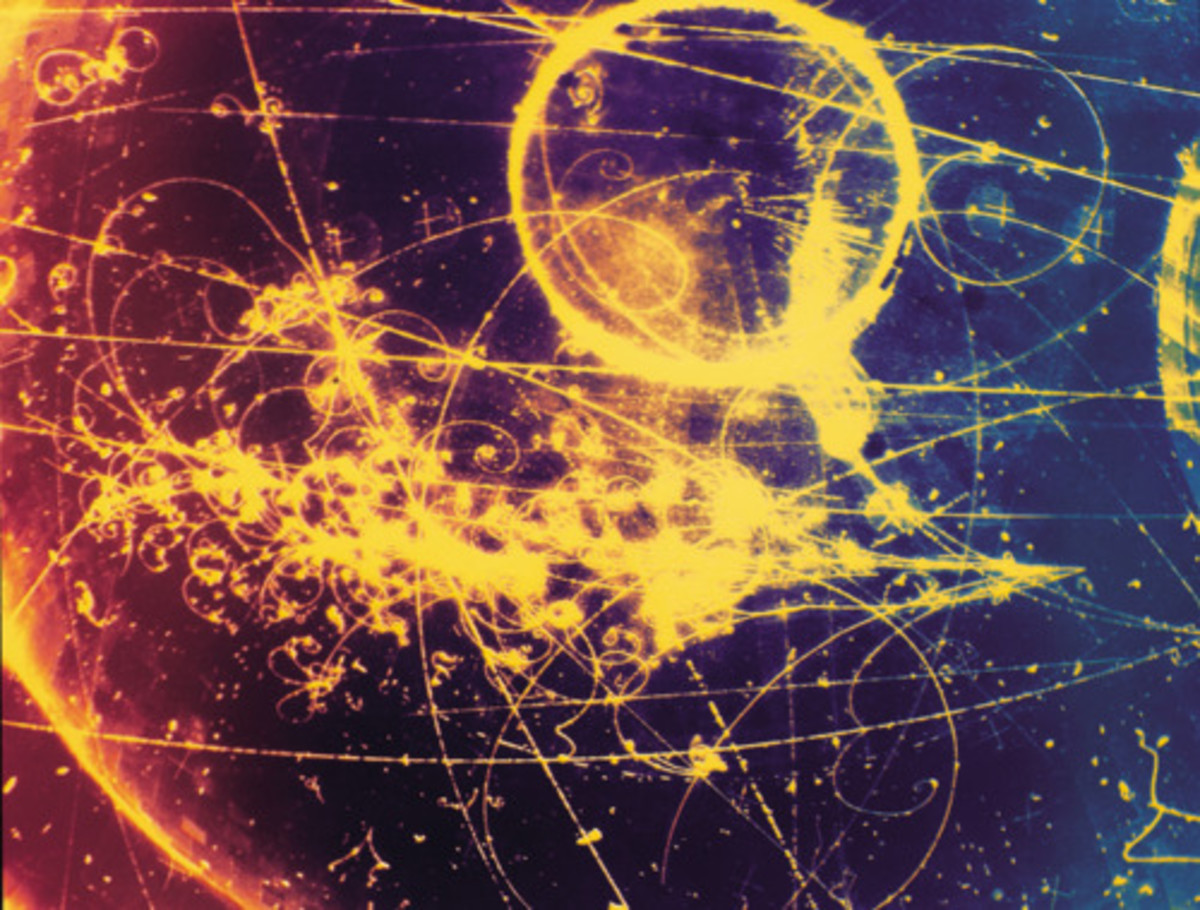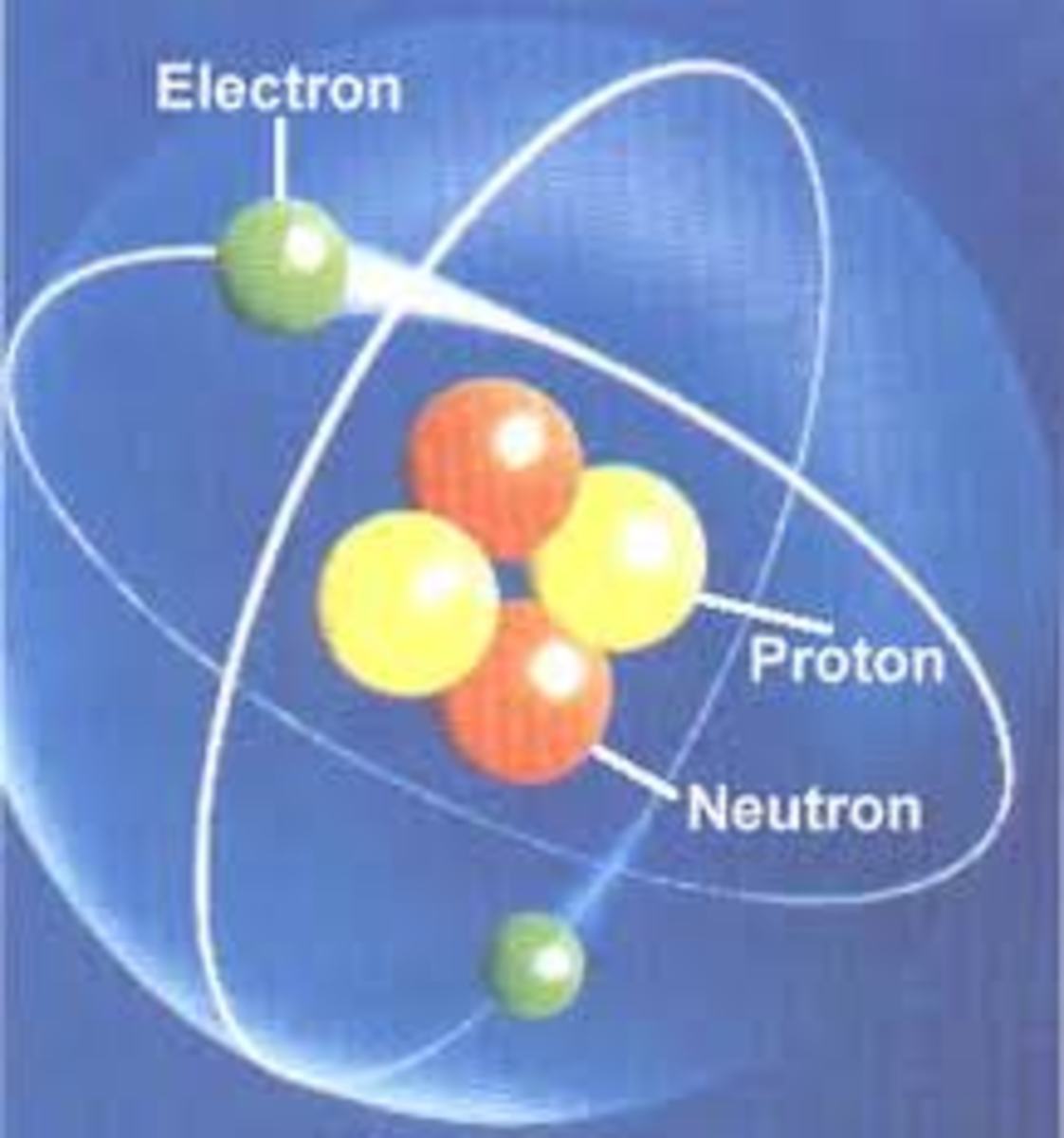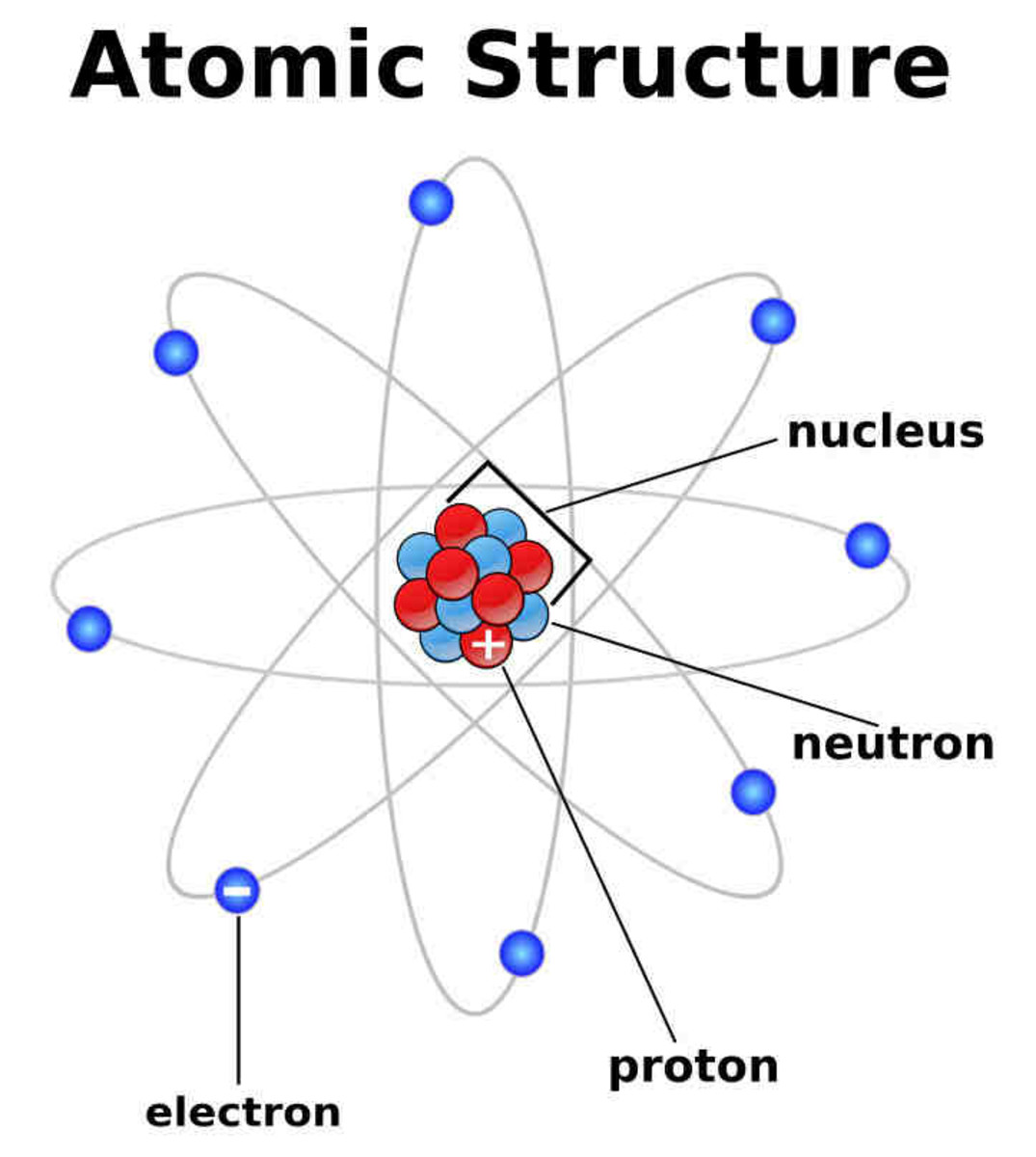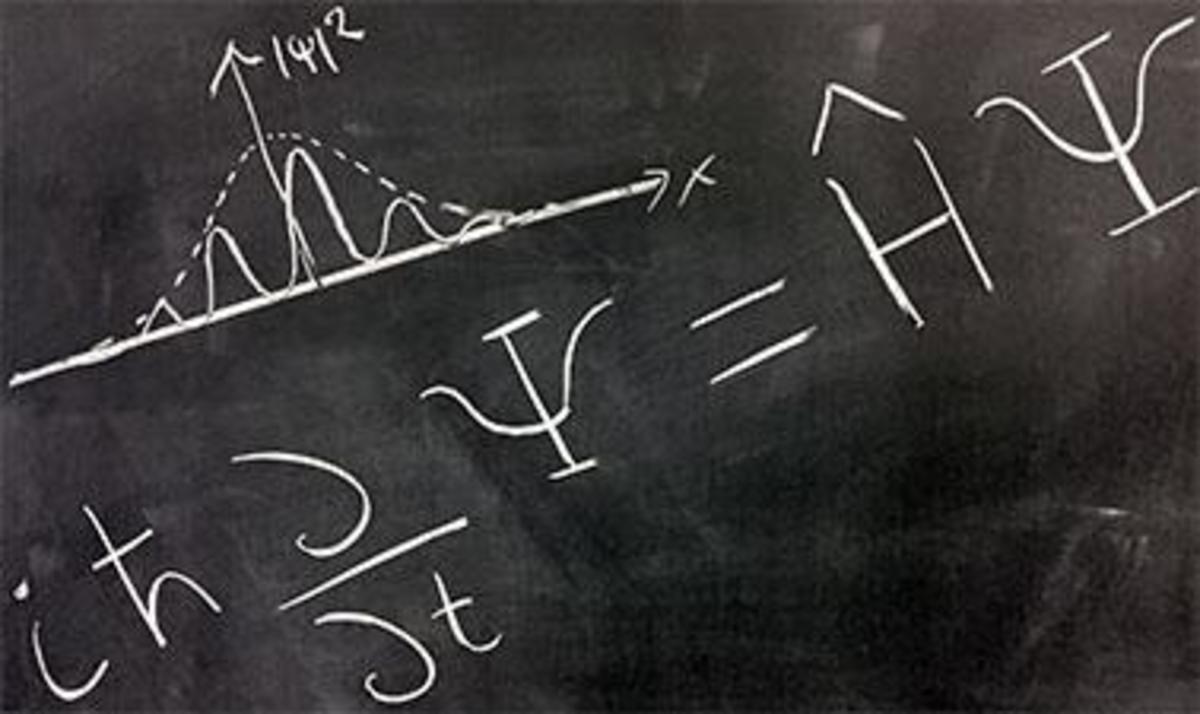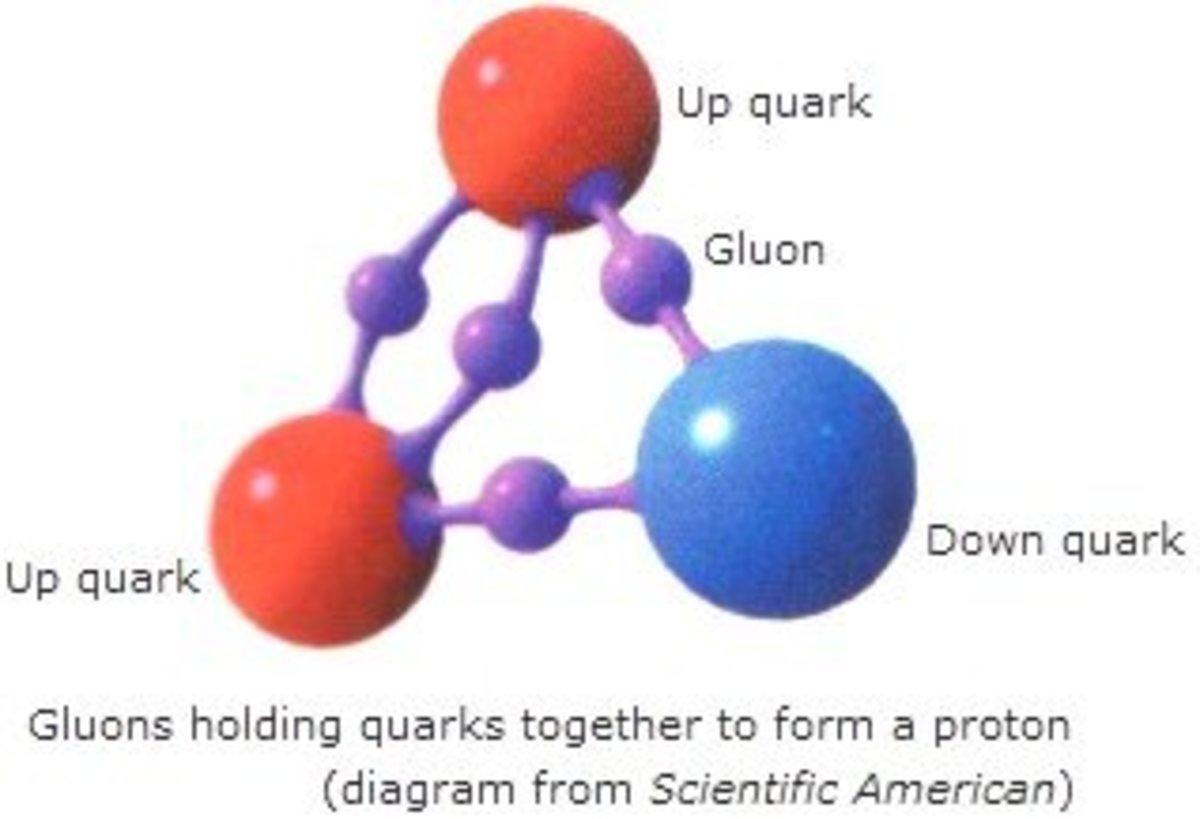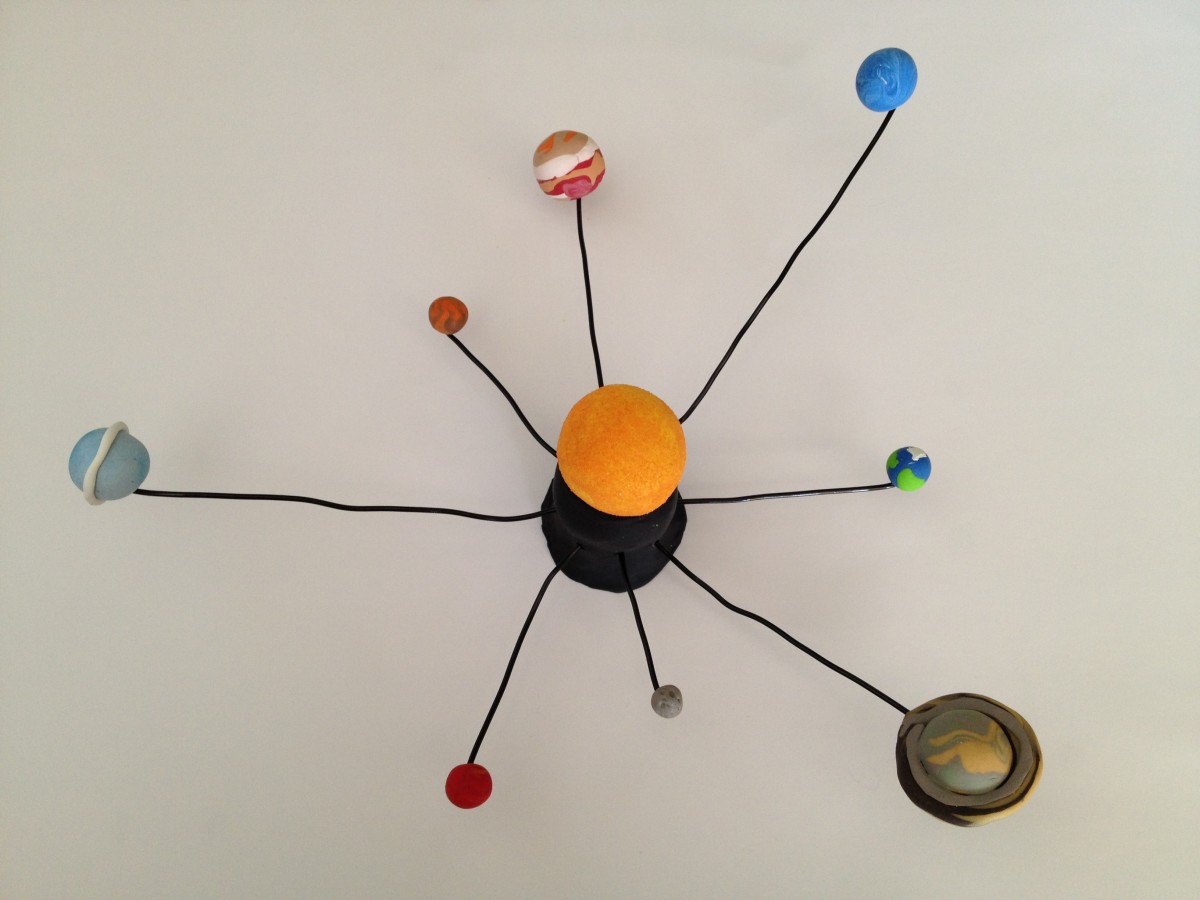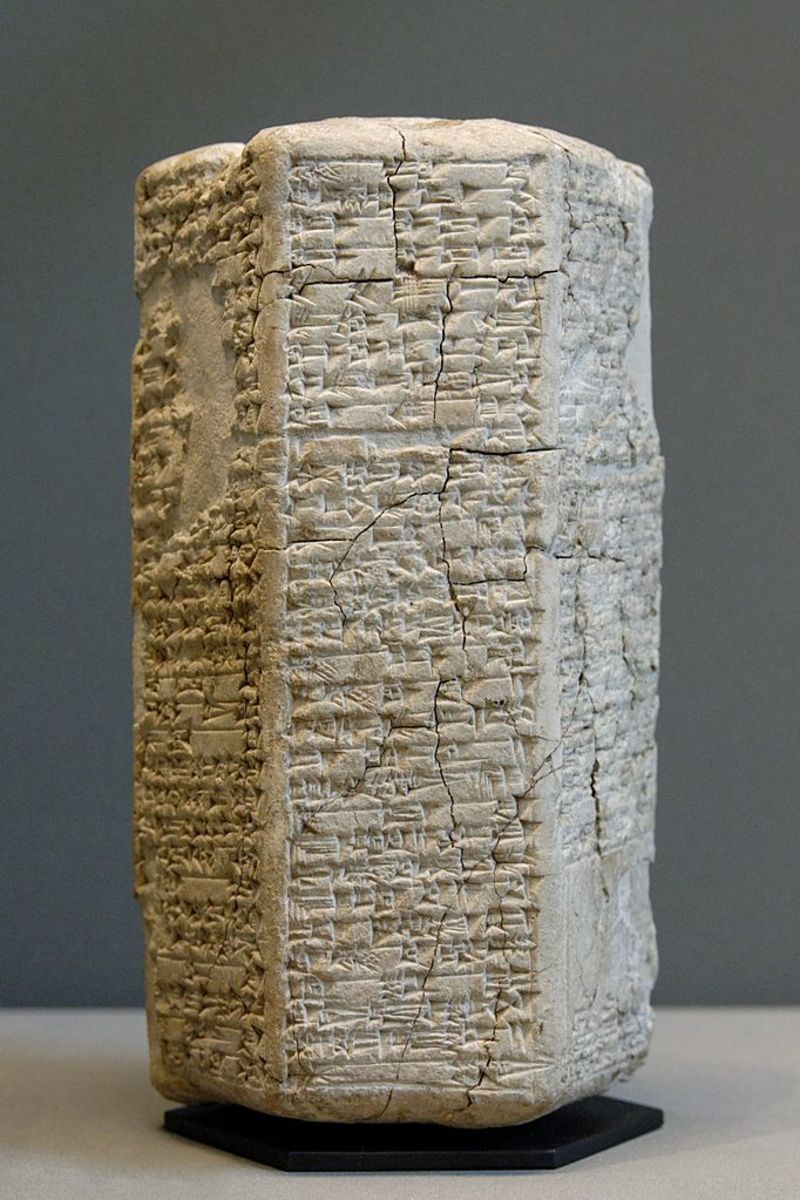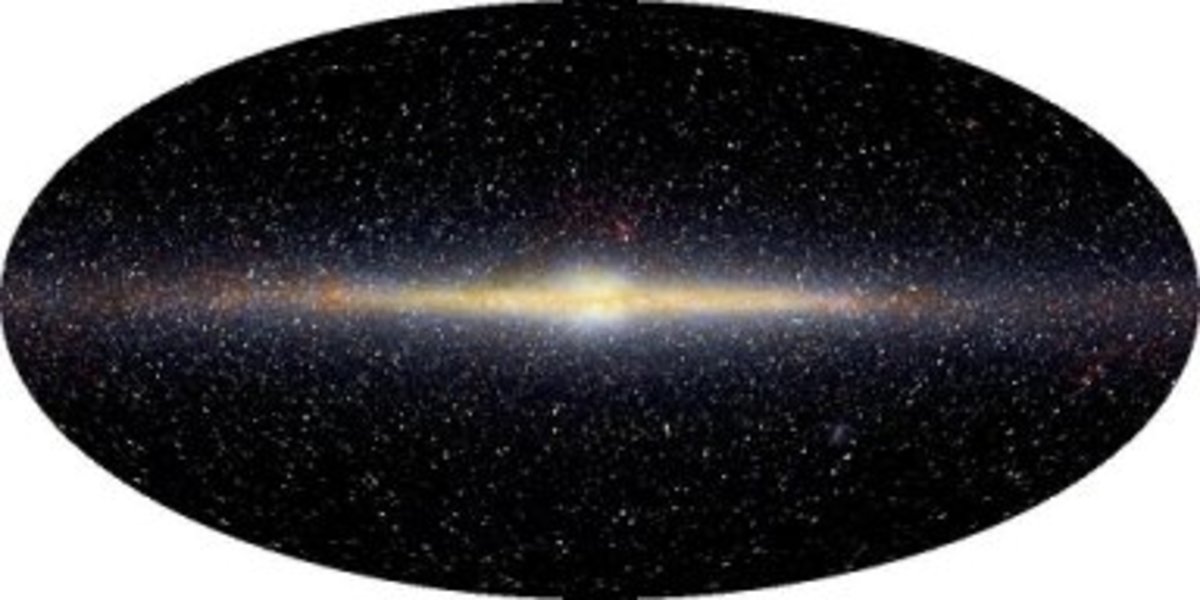Quarks
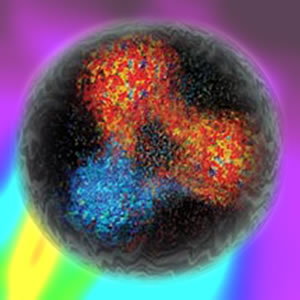
When I was in high school, we studied atomic theory. We were introduced to the table of the elements, ordered by atomic mass. The atom, we were told, consisted of protons, electrons, and neutrons. Electrons carried a negative charge, and orbited the nucleus of the atom. Protons carried a positive charge, and along with the neutrons (which had no charge), made up the nucleus of the atom.
And that was it.
The building blocks of matter, in an orderly array, neatly tabulate in the table of the elements.
Uh-huh.
They forgot to tell me about QUARKS!
Quarks combine to form hadrons (we've all heard of the hadron accelerator at CERN); hadrons ares the most stable and most familiar elements of matter; some hadrons form protons and neutrons, centered in the atomic nucleus.
There are six flavors (yep, that's what they call 'em, flavors) of quarks:
- up
- down
- charm
- strange
- top
- bottom
"Up" and "down" quarks are the most familiar to us and the most common throughout the universe. "Charm", "strange", "top" and "bottom" quarks can only be produced by a very heavy dose of cosmic rays, or in a particle accelerator.
For every quark there is an antiquark. For every quark flavor there's it's opposite number, with the same properties but an opposite charge. As with all antimatter, the antiquarks have the same mass, mean lifetime, and spin as their respective quarks, but the electrical charge is opposite and has the opposite sign.
The quarks which determine the quantum number of hadrons are called "valence quarks". Though the hadron may exist in a virtual sea of quarks...gluons...antiquarks; those other particles, some of them only a pure potential, do not influence the quantum number.
When did we move from this orderly atomic model with the electrons placidly orbiting the nucleus like miniature planets orbiting the sun, to this messy ocean of particles and possibilities called quantum mechanics?
In 1964, over 40 years ago, the "quark model" was proposed independently by two separate physicists:
- Murray Gell-Mann AND
- George Zweig
Another physicist, Yuval Ne'eman, also, in that same year, developed a similar model.
These models accounted for some of the anomalies in studying atomic theory, and were the inception of quantum mechanics, or, quantum theory.
The reception of these ideas amongst the greater scientific community was mixed. Many scientist accepted these theories provisionally--because after all, the math worked--but thought of "quarks" as a mathematical abstraction rather than the physical entities the math described.
Until, in 1968, scattering experiments conducted at the Stanford Linear Accelerator showed that protons contained much smaller point-like objects, and the physical reality of "Quarks" were confirmed.
Though the scientific community was slow to accept this. It threw out all our neat and orderly ideas of how matter is arranged. Instead of an orderly, Newtonian universe, with everything spinning in orderly circles, and where's there's and action there's an equal and opposite reaction, we are now swimming in a volatile cloud, an unpredictable sea of quarks, whose behavior is absolutely counter-intuitive to anyone raised in a Newtonian world.
The Up and Down quarks were physically spotted as a result of the Stanford 1968 experiment.
Charm quarks were produced almost concurrently--once again, within the same year, but independently, by Burton Richter at the Stanford Linear Accelerator and also by Samuel Ting at the Brookhaven National Laboratory, in 1974. The charm quarks were observed bound with charm antiquarks in "mesons ". A "meson" is the term for a subatomic particle composed of a single quark and it's opposite number, it's antiquark.
In 1977, the BOTTOM quark was observed at Fermilab. It wasn't until 1995 that his partner, the TOP quark, was observed, also at Fermilab.
Now quarks are the accepted atomic theory, and quantum mechanics the accepted physics of atoms and also the universe.
A "Quark" Star
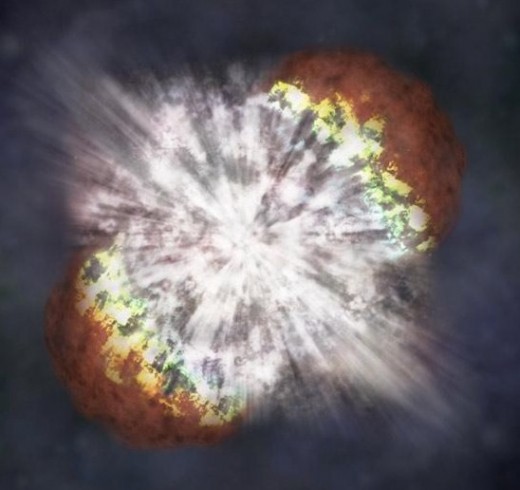
The term "QUARK" is also used in astrophysics. A "quark" in space is a neutron star which has degenerated even further: it's neutrons have lost their boundaries and the star is a massive, very hot, lump of undifferentiated quarks. It is on the last step to becoming a black hole in space, with a finite, infinitely dense mass and zero volume. Depending on what mass it has, it may stabilize as a very, very hot, bright, supernova quark, or it may continue to degenerate and become a new black hole in space.

